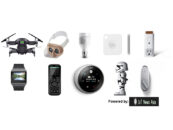Asia’s burgeoning smart home market will reach US$115 billion by 2030, accounting for 30 percent of the global share, according to a report released by global management consulting firm A.T. Kearney.
- The report forecasts the global smart home market to grow to US$50 billion by 2020 and surge to US$400 billion by 2030, from US$15 billion currently.
- Grow in Asia will be driven by China and Japan, with highly-connected economies such as Singapore, South Korea and Taiwan also playing a key role
“Asia’s socio-economic landscape provides a great opportunity for the region to be a global driver of growth in the smart home sector over the next few years. While the smartphone market is peaking out, the smart home market is becoming the next promising market,” says Nikolai Dobberstein, Partner and Asia-Pacific Head of Communications, Media and Technology at A.T. Kearney and a co-author of the report.
The report states that the idea of the connected, intelligent home is becoming a reality in Asia due to four major shifts that are accelerating market expansion
- Connectedness and Intelligence: The advancements in technology and processing power of smartphones has seen homes become much more connected. The addition of big data and artificial intelligence, which is allowing some applications to anticipate users’ needs and act accordingly, is making homes intelligent as well.
- Interoperability: There has been marked improvement in the interoperability among products from different manufacturers, making home applications more broadly useful to consumers. Industry alliances and efforts to standardize communication of applications are proliferating across the smart home ecosystem to drive progress.
- Product availability and cost: Nearly every aspect of home living is already covered by automated products, 80 percent of which are now commercially available in ‘smart’ form. Declining costs of vital technology and parts are making smart home appliances such as washing machines, refrigerators and door locks, more affordable.
- New monetization models: Smart home applications are opening up to wider networks, creating new monetization models for companies throughout the entire ecosystem. For example, an internet-connected refrigerator with a built-in LCD monitor can generate revenue from online advertisements providing a potential revenue stream.
This article first appeared on iotnews.asia









